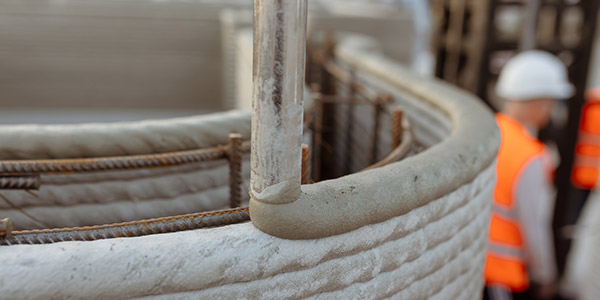Housing News
3D Printed Homes Rising in Popularity
August 27, 2021
Given the supply chain issues that are affecting the homebuilding industry, an alternative form of building may help alleviate some of those construction issues: 3D-printed homes.
And while 3D printing a home may not be a commonplace occurrence at this point, two-thirds of all consumers would consider living in one in the future.
That stat comes courtesy of a new survey from Realtor.com, which asked a representative sample of more than 3,000 people for their views on 3D-printed homes.
According to the survey, 66% of consumers would consider living in a 3D-printed home. That figure was even higher among Millennials, with 75% of that generation saying it would consider a 3D-printed home.
The survey also found that 30% of all respondents and 43% of millennials think that 3D-printed homes will eventually replace traditional homebuilding methods.
Of the 3,026 people surveyed, 42% said they were aware of 3D home printing technology. Among recent home buyers, the figure was higher, with 63% saying they were aware of the technology. In its report, Realtor.com suggested that those looking for a home are doing their research into new homebuilding technology.
According to Realtor.com Senior Economist George Ratiu, increasing alternative construction methods as an addition to traditional methods could help alleviate some inventory and pricing concerns.
"Over the past decade, as the homebuilding industry focused mainly on the upper-end of housing, expecting younger generations to favor renting, the price of construction has pushed new homes out of reach for many first-time home buyers," Ratiu said.
With the largest generation in U.S. history embracing homeownership, and the pandemic accelerating the move toward suburban markets, new home construction plays a pivotal role in meeting the growing demand," Ratiu added. "As technology is advancing novel building solutions, anything we can do to reduce the cost of new construction and increase the number of available homes, especially at an affordable price point, will help to restore balance in this strong seller's market."
However, some people are still unsure of 3D printing for homes, with 36% indicating that they would wait to see how the technology developed before pursuing a 3D-printed home themselves.
Beyond that, 22% said they prefer the aesthetics of a traditional home; 22% said they don't think a 3D printed home will last as long; 18% don't want their home to look the same as their neighbors; 14% said they prefer an existing home over new construction; and 14% don't trust the technology.
"While the technology is still somewhat nascent, our survey data shows that consumers are very interested in 3D printed homes," Ratiu said. "
While there have only been a small number of 3D printed homes sold to date, as the technology continues to advance, we could see it add more affordable homes to the housing market," Ratiu concluded. "For the rising generations of digital natives, new building technology may provide a sustainable bridge toward homeownership."






 Smart Moves Start Here.
Smart Moves Start Here.